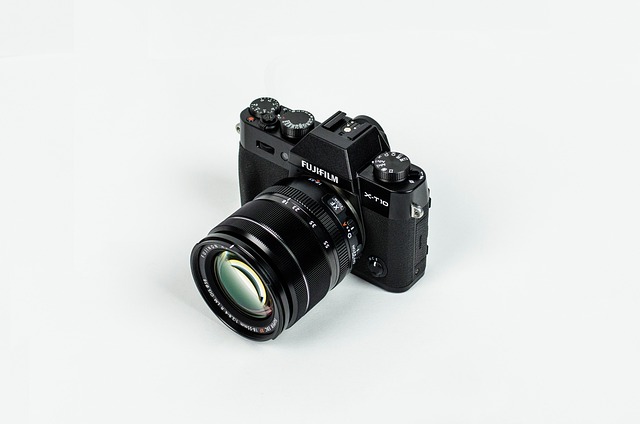Advanced RF Microneedling combines radio frequency energy with microneedling to achieve deeper skin penetration, stimulating collagen and elastin production for enhanced aesthetic results compared to traditional methods. While it poses increased irritation risks, proper screening, equipment sterilization, and post-procedure care can mitigate these. With longer session durations but quicker healing times, Advanced RF Microneedling offers precise targeting for various skin concerns, though its high cost may limit accessibility. It addresses inconsistent outcomes of traditional microneedling by providing more reliable results, making it a game-changer for specialized skincare.
Traditional microneedling, while popular, faces several limitations that hinder its effectiveness. This article delves into the key constraints plaguing conventional methods, focusing on advanced RF microneedling techniques. We explore challenges like limited penetration depth and skin irritation management. Additionally, we discuss time-consuming procedures, cost implications, unpredictable results, and insufficient targeting of specific skin concerns. Understanding these limitations paves the way for embracing innovative solutions in the realm of advanced RF microneedling.
Limited Penetration Depth: Challenges and Solutions

Microneedling, a popular skin rejuvenation method, has faced limitations due to its inherent design constraints. One significant challenge is the limited penetration depth of the tiny needles used. Traditional microneedling devices typically penetrate only the uppermost layers of the skin, making it less effective for deeper issues like hyperpigmentation or acne scars. This superficial impact restricts its ability to stimulate substantial collagen production, a key factor in achieving long-lasting results.
Advanced RF (Radio Frequency) Microneedling offers a promising solution to this dilemma. By combining microneedling with focused RF energy, it can penetrate deeper into the skin, reaching the dermis layer where significant collagen and elastin production occurs. This advanced technique enhances cellular regeneration, improves skin texture, and addresses a broader range of aesthetic concerns compared to traditional methods.
Skin Irritation: Managing Side Effects

Microneedling, a popular skin rejuvenation technique, involves creating tiny pricks in the skin to stimulate collagen production. While it offers significant benefits, one of its traditional limitations is skin irritation. This side effect can range from mild redness and swelling to more severe reactions, especially for individuals with sensitive skin or those new to the procedure.
Advanced RF Microneedling, which combines radiofrequency energy with microneedling, further enhances collagen stimulation but also increases the potential for irritation. To manage these side effects, practitioners must carefully select suitable candidates, use sterile, high-quality needles, and apply appropriate topical anesthetics. Post-procedure care, including using gentle skincare products and avoiding harsh chemicals, is crucial to minimize discomfort and promote faster healing.
Procedure Duration: Time Considerations

The duration of a microneedling procedure, including advanced RF (Radio Frequency) Microneedling, is an essential factor to consider for potential patients. While traditional microneedling sessions can last anywhere from 30 minutes to an hour, the advanced RF version typically takes slightly longer due to its comprehensive approach. This extended duration allows for deeper penetration of the skin, which is crucial for achieving noticeable results, especially when targeting specific skin concerns like scars or fine lines.
Time considerations don’t stop there. The healing process after microneedling also plays a significant role in determining the total time commitment required. Typically, patients can expect their skin to heal within 3-7 days, but more severe cases might take longer. Skilled practitioners using advanced RF Microneedling techniques can optimize both procedure and recovery times, ensuring patients receive the best of both worlds: effective treatment and minimal downtime.
Cost Implications: Budget Constraints

Microneedling, a popular skin rejuvenation method, comes with its own set of financial considerations. The cost implications, particularly for advanced procedures like RF (Radio Frequency) Microneedling, can be a significant barrier for many individuals. This advanced technology offers precise targeting and deeper penetration, resulting in more effective treatments for various skin concerns. However, the high cost associated with it might limit accessibility for those on tighter budgets.
Budget constraints often lead to important decisions regarding skincare routines and procedures. While RF Microneedling can provide remarkable results, potential patients must weigh the advantages against the financial commitment. It’s essential to consider individual financial capabilities and explore options that align with their means, ensuring they still receive quality care without compromising long-term financial stability.
Results Variability: Predictability Concerns

One significant challenge associated with traditional microneedling is the variability in treatment outcomes. The predictability of results can be a concern, as factors such as skin type, age, and overall health can influence how effectively the body responds to the procedure. This unpredictability often requires multiple sessions for optimal effects, adding time and cost to the process.
Advanced RF Microneedling offers a potential solution by leveraging radiofrequency technology to stimulate collagen production more consistently. This advanced approach aims to enhance the predictability of results, ensuring that each treatment session provides a measurable and desired outcome. By addressing this limitation, Advanced RF Microneedling could make microneedling more accessible and efficient for individuals seeking skin rejuvenation.
Inadequate Addressal of Specific Skin Issues

Microneedling, a popular skin rejuvenation method, has been limited in its ability to address specific skin concerns. Traditional microneedling techniques often fall short when it comes to more complex issues like severe acne scarring, hyperpigmentation, or deep wrinkling. These procedures primarily focus on stimulating collagen production and improving skin texture, but they may not deliver significant results for unique or persistent skin problems.
Advanced RF (Radio Frequency) Microneedling offers a promising solution by combining needle penetration with targeted RF energy delivery. This technology enables more precise treatment of various skin conditions. For example, it can effectively treat acne scars and hyperpigmentation by stimulating collagen renewal and even outskinning tone. The advanced approach allows for a more tailored treatment plan, making it a game-changer for individuals seeking specialized solutions beyond general skin rejuvenation.
